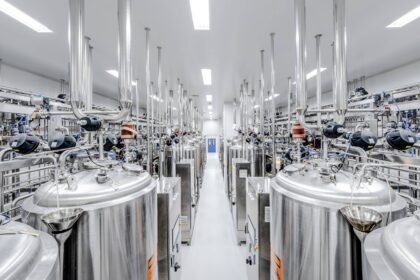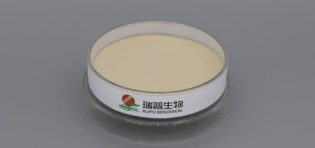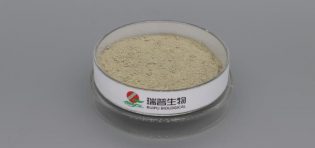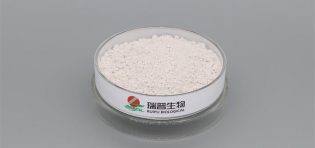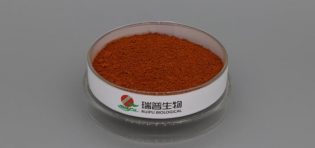
Quality identification of ferrous fumarate raw material is a comprehensive process involving various tests and analyses. Below is a detailed explanation of the quality identification of ferrous fumarate raw material:
1. Appearance and Characteristics
Ferrous fumarate usually appears as an orange-red to reddish-brown powder, odorless and tasteless. During identification, its quality can be preliminarily assessed by observing its color and morphology. High-quality ferrous fumarate powder should be uniform in color, free from impurities, and odorless.
2. Chemical Identification
·Resorcinol Reaction: Take an appropriate amount of the sample, add resorcinol and sulfuric acid, then heat and observe the color change. If the solution turns into a dark red semi-solid and dissolves in water to display an orange-red color with green fluorescence, and then turns red with fluorescence upon adding sodium hydroxide solution to make it alkaline, it indicates the presence of ferrous fumarate in the sample.
·Sodium Carbonate-Potassium Permanganate Reaction: Dissolve an appropriate amount of the sample in hydrochloric acid, then add sodium carbonate and potassium permanganate solutions. If the solution turns brown, it indicates the presence of ferrous ions in the sample.
·Ultraviolet Spectrophotometry: By measuring the sample’s absorption at specific wavelengths, its chemical structure can be further confirmed. Ferrous fumarate should have maximum absorption at 206 nm.
3. Content Determination
·Iron Content Determination: This is a core item in ferrous fumarate testing. The iron content in the sample can be accurately determined using chemical analysis methods such as spectrophotometry or atomic absorption spectroscopy to ensure it meets the relevant standards.
·Ferrous Fumarate Content Determination: The cerium sulfate titration method can be used, with o-phenanthroline as the indicator, to determine the content of ferrous fumarate in the sample through titration. This method offers high accuracy and reliability.
4. Heavy Metal Content Testing
Due to potential heavy metal contamination during the production and use of ferrous fumarate, testing for heavy metals, such as lead, cadmium, and arsenic, is essential. Quantitative analysis using high-precision instruments like atomic absorption spectrometers ensures that the heavy metal content in the sample meets relevant standards.
5. Microbiological Testing
In the food and pharmaceutical fields, the microbiological safety of ferrous fumarate is crucial. Testing for microorganisms, such as bacteria and fungi, assesses whether the sample meets hygiene standards. Common equipment for microbiological testing includes incubators and microscopes, which effectively evaluate the microbiological safety of the sample.
6. pH Value Measurement
The pH value is an important factor affecting the stability of ferrous fumarate. Measuring the sample’s pH value can assess its stability under different environmental conditions. A modern pH meter can quickly and accurately measure the acidity or alkalinity of the sample.
7. Moisture Content Testing
Moisture content directly affects the storage and performance of ferrous fumarate. Using methods like drying or Karl Fischer titration, the moisture content in the sample can be determined to ensure it is within an acceptable range.
8. Other Testing Items
Additional tests, such as sulfate content, loss on drying, and ferric salt content, can be conducted as needed. These tests help to fully understand the quality and properties of the sample.
The quality identification of ferrous fumarate raw material requires a comprehensive consideration of various factors. Through rigorous testing and analysis, it can be ensured that the ferrous fumarate raw materials used meet relevant standards and requirements, providing strong assurance for the quality and safety of the product.


